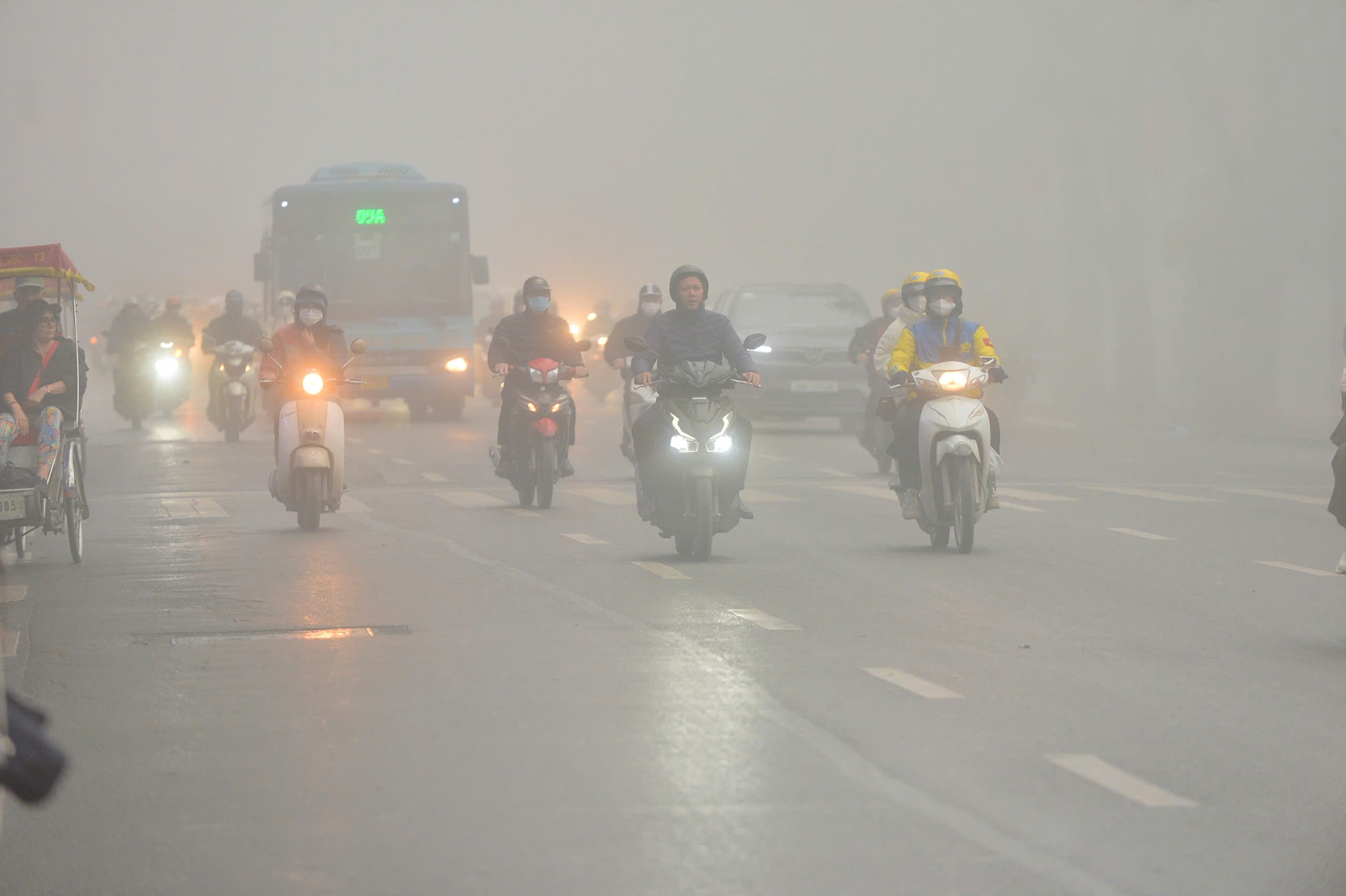Việt Nam’s Insiduous Calculation Behind Y Quỳnh B’Đắp’s Extradition
On Nov. 26, a Thai court upheld the extradition of Y Quỳnh B’Đắp, essentially allowing the Thai government to
Hiếu Mạnh wrote this article in Vietnamese and published it in Luật Khoa Magazine on August 22, 2025. Đàm Vĩnh Hằng translated it into English for The Vietnamese Magazine.
In 2025, Việt Nam’s ride-hailing market is estimated to be worth USD 1.05 billion and is projected to reach USD 2.56 billion by 2030, maintaining an average annual growth rate of 19.5%, according to a report by Mordor Intelligence. The competitive landscape saw a significant shift in the fourth quarter of 2024, as Xanh SM surged to the lead with a 37.41% market share, narrowly surpassing Grab (36.62%). They are followed by Be (5.55%), Mai Linh (4.81%), and Vinasun (2.44%).
However, this dazzling growth masks a starkly different reality for the industry’s drivers. Their lives remain deeply unstable, plagued by precarious incomes and "take it or leave it" policies from companies and authorities alike.
Amid new restrictions targeting gasoline-powered vehicles, this raises critical questions: How are drivers struggling to make a living, and are they receiving adequate support from either corporations or the state?
Contrary to media narratives of university graduates quitting office jobs to earn "tens of millions of đồng per month," the financial reality for ride-hailing drivers is grim. According to a survey by the Institute for Development Studies of Hồ Chí Minh City (HIDS), a driver's average monthly income is just 8.7 million đồng, earned by working an average of 8.8 hours a day for 25.4 days a month. Nearly 20% of drivers work all 30 days without rest.
A breakdown of individual fares reveals why earnings are so low. For a short 2 km trip with a 13,000 đồng fare, the driver keeps just over 8,000 đồng. For a longer trip of over 20 km, a fare exceeding 100,000 đồng nets the driver about 70,000 đồng after commissions and taxes, and only around 50,000 đồng after fuel costs—not including vehicle wear and tear. Even on a good 10–12 hour day, earnings might reach 400,000–500,000 đồng, but a steady stream of trips is never guaranteed.
This is a stark decline from just a few years ago when drivers could earn 20–30 million đồng per month by completing only 10–20 trips per day. As the number of drivers has surged, companies have slashed fares to compete while simultaneously raising commission rates, squeezing drivers' incomes from both ends.
Meanwhile, the performance of many ride-hailing companies paints a starkly different picture—one of relentless expansion and growth.

By 2025, the sheer scale of Việt Nam’s ride-hailing sector is undeniable. The workforce is massive, with Be employing approximately 400,000 drivers, Grab around 300,000, and newcomer Xanh SM already commanding a fleet of nearly 90,000. This army of drivers serves a rapidly climbing user base, which is projected to reach 37 million people by 2029—equivalent to 35.4% of the population.
However, this explosive growth has not led to a fair distribution of work. Companies often prioritize newly registered drivers in trip allocation as a strategy to keep them engaged. Many veteran drivers report a "bait-and-switch" experience; when they first registered, they were flooded with ride requests, but over time, their opportunities dwindled as trips were systematically diverted to newer recruits.
Ride-hailing drivers are in a uniquely vulnerable position, stemming from their official classification as “business partners.” This label, while appearing respectful, is a legal mechanism that excludes them from basic labor rights such as social and health insurance. Upon signing up, drivers enter into partnership contracts, not labor contracts, a distinction that places them outside the scope of Việt Nam’s 2019 Labor Code.
According to Clause 5, Article 3 of the Labor Code , a formal labor relation requires an employment agreement, wages, and an employer. By avoiding this structure, companies shed the legal obligations of an employer, meaning they are not required to provide compulsory social or health insurance. Drivers are instead left with the option of voluntary social insurance under Resolution 28/2018.
Consequently, while drivers are bound by contracts that dictate strict performance obligations, they cannot claim the entitlements of an employee, such as paid leave or welfare benefits. Only a small fraction of full-time drivers may qualify for accident insurance, and even then, only under stringent conditions.

On Aug. 12, 2025, the Hồ Chí Minh City Institute for Development Studies (HIDS) submitted a proposal to the city government to transition the ride-hailing sector from gasoline to electric vehicles. The plan outlines a multi-year phase-out, beginning in January 2026 with a ban on new contracts for gasoline motorbikes. The restrictions would escalate with peak-hour limitations in 2027 and stricter emissions controls in 2028, culminating in a complete ban on gasoline motorbikes in ride-hailing by December 2029.
HIDS argued that ride-hailing and delivery drivers should be the first to transition, as their long daily travel distances would yield significant emissions reductions and set a strong social example. However, the proposal immediately drew criticism. Critics argue that the policy targets low-income workers who depend on their current motorbikes for survival. Forcing them to purchase more expensive electric vehicles would create crushing financial pressure, while practical issues like battery life, durability, and charging time remain critical, unsolved concerns.

A survey of 400 ride-hailing drivers in Hồ Chí Minh City reveals a staggering debt crisis. Car drivers in the survey collectively owed 48 billion đồng, averaging 350 million đồng each, while motorbike drivers carried an average debt of nearly 20 million đồng. This debt is often incurred through loan packages used to acquire vehicles.
Marketed as a form of support, these loans promise easy ownership of new vehicles with low upfront costs and "preferential" interest rates. However, the contracts often hide predatory terms: daily late-payment penalties, compounding interest, and the risk of falling into a rolling debt cycle. For drivers whose incomes are dependent on market fluctuations and their personal health, a few missed payments can quickly spiral into an unmanageable financial crisis. What begins as a lifeline to enter the industry ultimately becomes a shackle, turning the "rice bowl" for a driver's family into a long-term burden.
For ride-hailing drivers, whose unstable incomes depend entirely on market conditions and their own health, the financial risks are ever-present. Loan packages, marketed as support, often become traps that turn a family’s livelihood into a crushing spiral of debt. On top of this precarity, drivers face new pressures from both the state and their employers.
Regardless of the environmental merits of electric vehicles, the immediate consequence of the proposed policy is clear: drivers must shoulder new debts to purchase a vehicle simply to keep their jobs. Simultaneously, as the ride-hailing market expands, competition will only intensify. This will inevitably lead to lower fares, with the so-called “partners” forced to absorb the financial hit on behalf of the companies.
If this top-down, “take it or leave it” approach from regulators and corporations continues, it is difficult to imagine what new hardships drivers will face on their already winding, dust-filled, and rain-soaked journey.
Vietnam's independent news and analyses, right in your inbox.